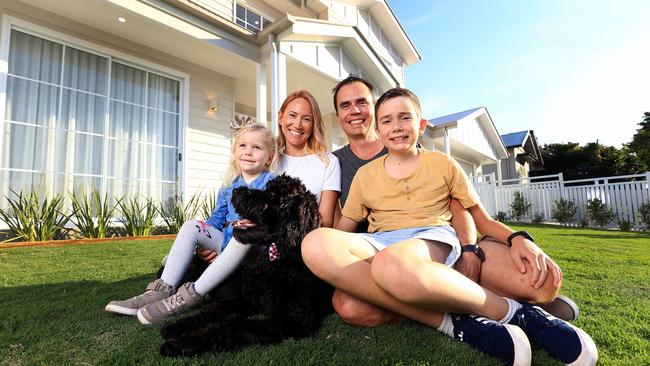Real estate decides Australia’s new class system
When it comes to real estate, great fortunes can be built on pride swallowed, early on.

During the long lockdown last year, there was no work around, so the brothers made use of the time. There were so many free courses available online, so one studied for a building licence. He intends to supervise the development so they don’t get ripped off by the contractors.
It has always been hard to buy a house in Sydney and Melbourne, but arguments over which generation had it easier are silly to get into and impossible to settle. And, of course, there are plenty of inspirational examples like the one above. When it comes to real estate, great fortunes can be built on pride swallowed, early on.
Nevertheless, house prices concern many, and have changed our society to a great extent. Research released in 2019 by academics at the University of Sydney show the new class divide is not related to education levels, occupation or income, but to home ownership.
This is because we live in an “asset society” where our houses can easily go up in value far more than we earn each year, be used to buy more homes, which again go up, and these can produce rental income growth that outstrips our wage growth.
Jobs and income don’t define our social class and self-identity now, Lisa Adkins and Martijn Konings say, but our ownership of property does. The blue- or white-collar worker divide no longer matters, because the long-time societal delineations based on our jobs have been replaced by whether we own or are buying a house, or will be forever locked out of the housing market.
The researchers say the developed world has a new asset-based class system, with five tiers. At the top is an “investor” group, people who live off investment income. Next come those who own their home outright, followed by those with a mortgage. Below that are “churners” with no housing assets and on the bottom rung are renters and the homeless.
This “structural reconfiguration” means the life chances of most people are now determined by property ownership rather than their job and weekly wage.
This research, along with falling rates of home ownership, presents a dilemma for the federal government. Those who feel excluded from home ownership rightly feel anxiety, despair and resentment. These feelings translate into political leanings. Coalition insiders acknowledge that if people can’t afford owning a home, they rent in the private market. If they can’t afford to rent they turn to social housing.
Generally, it is homeowners that vote for the Coalition.
More than 70 years ago, housing affordability was an election issue, too. Along with bank nationalisation, policy differences on home ownership illustrated the big divide between Liberal and Labor. Labor prime minister Ben Chifley, in his 1949 election speech, announced the establishment of a commonwealth-state housing agreement, to ensure Australians could “secure a good home at the rent he can afford”.
Robert Menzies, however, didn’t see affordable rental property as the ideal outcome for Australians. He pushed for the agreements to be amended so that “little capitalists” could “own their own homes”.
Those policy differences remain in place today. Now, though, demographic change, combined with lower home ownership rates in the younger generation, represents a benefit for Labor, and spells danger for the Coalition.
Key Liberals have seen the data and understood the implications. They were right to call this week for discussion on the issue. Melbourne MP Tim Wilson points out “the biggest demographic voting bloc in Australia today is 18-35”.
This demographic votes Green and Labor. Only 15 per cent of the 18-24 cohort vote Coalition and in the 25-34 age group only 27 per cent vote Coalition. In contrast, the 65-plus bracket vote 55 per cent Coalition. Wilson says the “biggest leading indicator” that voters will “switch their voting behaviour to Liberal is when they buy a first home”.
Indeed, there are plenty of studies that show asset ownership affects voting behaviour. For example, the Voter Choice Project reported that in a 2018 survey, those not intending to vote Coalition were around 20 per cent less likely to own a home. An ANU-Indiana University study on data compiled in 2016 found that outright homeowners were 7 per cent more likely than renters, to vote Coalition. “It is little wonder that Labor prioritises rented housing and ‘super before homes’, and it is precisely why Liberals should push home first, super second,” Wilson says.
Coalition insiders say Labor wants two things in this policy space; super before housing, and for super funds and government to build houses they then rent. This keeps people at the bottom of the class system, but also shores up the base vote.
The challenge for the Coalition is to be creative and bold in policy design. It needs to facilitate higher rates of home ownership in the young, without overheating the market further. At the same time, it cannot afford to punish those who already own homes either, because these people are their voting base.





Three brothers I know came to Australia about a decade ago with very little. They settled in the outer west of Melbourne, bought a house they all shared and this year are onto their first housing development. They purchased a house and are going to knock it down to build townhouses. The profit will then be sunk into the next development.